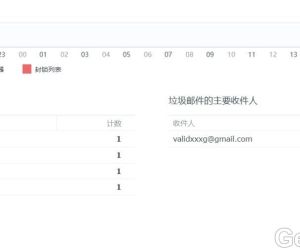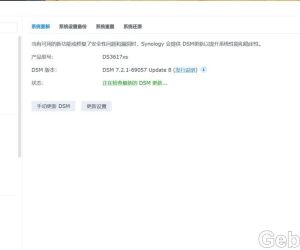aks and script edits to make this loader work better." R& |& O! U9 A& y( D% ~
# ?4 a5 K8 h+ n( ^; g. I8 _
Please read this thread thoroughly prior to posting questions, especially the FAQs and Installation Guide
Synology Hybrid Raid (SHR is enabled by default). You can disable it by using XPEnology Configuration Tool.; Z1 ]6 @( ^1 i( A8 P% k
XPEnology Configuration Tool2 f2 B; h9 B. D$ h3 G# f n0 c2 D
XPEnology Configuration Tool is a complete set of utilities within XPEnology that facilitate out of box setup with many additional features. The inception of this came about when seeing so many have difficulty in preparing their systems for XPEnology.
No longer do you need to boot to Linux/MAC/Windows to configure grub.cfg or other settings within Synology DSM. Now you can configure everything from a nice graphical menu. For those of you without serial ports or capability to access the console, do not worry. This boot loader includes telnetd and sshd out of the box. Please see the FAQs section for more information on this.2 ^( x6 v, h9 E2 k, o3 Q5 D. v
0 V6 C# Y: u2 k
IMPORTANT! You do not need to modify grub.cfg directly. However, if you do, ONLY MODIFY GRUB.CFG!# O; D# k. U: \. X
IF YOU MESS WITH ANY OTHER FILES YOU ARE ON YOUR OWN! YOU WILL NOT BE SUPPORTED!8 H. z% Z) U, x; N
9 f, S% k# S8 j$ X# a
Main Features:- H. B9 z* X% ]4 _1 m4 s
1. Quick Setup – Automatically selects a random MAC Address, Serial Number and assists setting vid/pid of USB Stick
2. List current IP Address of eth0" Z! T2 `# w9 _2 v# B
3. Get new DHCP lease
4. Set Static IP Adress
5. Set MAC Address either randomly or by input
6. Set Serial Number either randomly or by input
7. Set vid/pid for USB boot stick
8. Set SATA Port Mapping, ~0 `7 Q. Y$ m8 B
9. Set number of Network Interfaces
10. Set max number of disks, }7 ?- m4 x- n, X, e3 |
11. List attached disks
12. Enable/Disable Synology Hybrid Raid (SHR) enabled by default6 W- F; Y L9 g2 Z9 E
13. Enable/Disable tty service (no serial port)9 H8 a3 i$ T9 O3 r4 }2 ~2 K, V
14. Start SSH Service (This is without PAM, so need to use PUB KEYs)+ E* D z. Y% \5 u* P$ e0 _) x
15. Stop SSH Service
16. Start Telnet Service
17. Stop Telnet Service
18. Update XPEnology Ramdisk/Drivers/Kernel
19. Update XPEnology Configuration Tool
20. Troubleshoot System2 G/ @4 {. E$ c, l$ Y/ ?2 O! j
21. Reboot, z7 ~3 J1 P8 t# @( S
22. Exit to shell3 f8 L1 Z5 k0 f' K* P
, @' S0 I0 }; H; N' b8 [% a
主要特点:- W2 K& J; F7 q r7 c
1.快速设置 - 自动选择随机MAC地址,序列号,并帮助设置USB棒的vid / pid
2.列出eth0的当前IP地址! y s! |( F. G
3.获取新的DHCP租用
4.设置静态IP地址
5.随机或输入设置MAC地址
6.随机或通过输入设置序列号
7.为USB启动棒设置vid / pid. u: ]: S/ u& K" T& f# `& j. U
8.设置SATA端口映射( R1 B2 M8 J- f+ f# O& z0 S/ a/ k
9.设置网络接口数) Q: i; z2 `1 J5 J- x- m2 I/ a6 K
10.设置最大磁盘数* H5 c7 M7 X: F0 z) n1 J* n2 ?
11.列出连接的磁盘: v% e" W1 ^' a" L8 e
12.启用/禁用默认情况下启用的Synology Hybrid Raid(SHR)" v# h/ c& R& N8 l
13.启用/禁用tty服务(无串口)
14.启动SSH服务(这是没有PAM,所以需要使用PUB KEY)3 ^9 J" U$ ]3 A4 ^: B& B$ x3 ?
15.停止SSH服务; H( m+ n( Q% b! M/ E& l& N
16.启动Telnet服务! v' |0 z q* G. ?8 O
17.停止Telnet服务
18.更新XPEnology Ramdisk /驱动程序/内核% K7 u; H9 ^* f! h( {
19.更新XPEnology配置工具4 ~1 L, u b% B+ L1 l
20.系统故障排除
21.重新启动
22.退出到shell, f( X7 F! g$ |5 D, w/ _
/ X1 N# L7 W* w$ N: Z' ]
Troubleshooting Features:2 y; D: _4 a/ A2 i }4 w
1. List attached disks1 G; S" ]+ Y9 ?
2. fdisk -l
3. sfdisk -l, V9 h2 d" \* d3 k4 d
4. parted -l# V$ j+ f; {" f) c
5. cat /proc/partitions3 Q6 i& e/ ]- H, W" g l- h% @
6. cat /proc/mdstat
7. mdadm –detail /dev/md0
8. mdadm –detail /dev/mdX (any volume)4 n* {' U, }: B$ ~2 g
9. fsck.vfat -y boot disk w% V) G. M1 p2 N3 h* Q+ `) l/ x5 e: i
10. fsck.ext4 -y /dev/md0 (this will fsck the root volume)7 \# V! i g2 }/ M( ?
11. fsck.ext4 -y /dev/mdX (this will fsck your data volume)
12. blkid
13. lsblk
14. lscpu
15. lsmod$ T2 H) o0 R+ _% J7 a
16. lspci+ F* i" m' e% j5 _) C: Y
17. lsusb
18. less /var/log/messages/ a6 m# W' J* k
19. tail -f /var/log/messages (useful to run before/during install)" `7 q+ _% I/ p: \; S3 I
20. Return to Main Menu6 i s+ K9 [$ q* U1 m+ |
21. Reboot
22. Exit to Shell |
 mailserverplus 破解版真不能用看图2111 人气#黑群晖
mailserverplus 破解版真不能用看图2111 人气#黑群晖 【诚心求彩虹岛CHD邀请】本人PT经验10年以189 人气#PTer求邀
【诚心求彩虹岛CHD邀请】本人PT经验10年以189 人气#PTer求邀 为什么DS3617xs DSM7.2.1-69057update8在安1639 人气#黑群晖
为什么DS3617xs DSM7.2.1-69057update8在安1639 人气#黑群晖 BTSCHOOL开放注册2天322 人气#PTer交流
BTSCHOOL开放注册2天322 人气#PTer交流